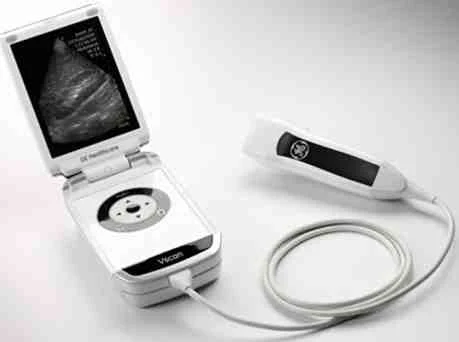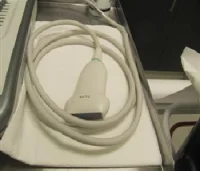The use of a pocket-sized ultrasound device (PUD) helps physicians in making more accurate diagnoses, reducing the need for further testing in both the inpatient and outpatient setting. The new findings were presented at The International Liver Congress™ 2015 in Vienna, Austria.
Researchers from Italy conducted a cohort study in four hospital medical wards, one gastroenterological outpatient clinic, and 90 general practices in the same geographical area. They assessed the effectiveness of the PUD when testing for the following conditions: gallstones, ascites, biliary-duct dilation, splenomegaly, pleural effusion, pericardial effusion, urinary stones, urinary retention, abdominal mass and aortic aneurysm.
The performance of PUDs is comparable with that of standard ultrasonography. In contrast, the accuracy of a physical examination is often poor meaning that further tests are required.
In this study, Dr. Agostino Colli of the Internal Medicine Department at Ospedale A Manzoni, Lecco, Italy, and colleagues investigated whether adding the use of PUD to physical exam could lead to a reduction in the rate of additional tests. PUD related findings were recorded, and the decision as to whether to request further tests was left to the physician's clinical judgement. The main outcome was to define the proportion of cases undergoing additional tests after PUD.
Of the 1,962 patients included in the study:
"After a simple and short training course, a PUD examination can be used in addition to a physical examination to improve the answer to 10 common clinical questions concerning in- and outpatients, and can reduce the need for further testing," Dr. Colli et al. conclude.
The study is also published online in PLoS One.
Source: European Association for the Study of the Liver
Image Credit: International Liver Congress
Researchers from Italy conducted a cohort study in four hospital medical wards, one gastroenterological outpatient clinic, and 90 general practices in the same geographical area. They assessed the effectiveness of the PUD when testing for the following conditions: gallstones, ascites, biliary-duct dilation, splenomegaly, pleural effusion, pericardial effusion, urinary stones, urinary retention, abdominal mass and aortic aneurysm.
The performance of PUDs is comparable with that of standard ultrasonography. In contrast, the accuracy of a physical examination is often poor meaning that further tests are required.
In this study, Dr. Agostino Colli of the Internal Medicine Department at Ospedale A Manzoni, Lecco, Italy, and colleagues investigated whether adding the use of PUD to physical exam could lead to a reduction in the rate of additional tests. PUD related findings were recorded, and the decision as to whether to request further tests was left to the physician's clinical judgement. The main outcome was to define the proportion of cases undergoing additional tests after PUD.
Of the 1,962 patients included in the study:
- 726 (37 percent) were inpatients, 510 (26 percent) were hepatology outpatients and 726 (37 percent) were recruited from GPs;
- Gallstones (37 percent), ascites — excessive accumulation of fluid in the abdominal cavity (17 percent), pleural effusion (13 percent), urinary stones (13 percent) and urinary retention (12 percent) accounted for more than 90 percent of the clinical questions, confirmed by PUD in 66 percent of cases;
- The overall frequency of further tests needed after PUD was 37 percent;
- The rate of agreement between findings of the PUD and additional tests was 89 percent.
"After a simple and short training course, a PUD examination can be used in addition to a physical examination to improve the answer to 10 common clinical questions concerning in- and outpatients, and can reduce the need for further testing," Dr. Colli et al. conclude.
The study is also published online in PLoS One.
Source: European Association for the Study of the Liver
Image Credit: International Liver Congress
References:
Colli A et al. (2015) The use of a pocket-sized ultrasound device improves physical examination: results of an in- and outpatient cohort study. PLoS One. 2015 Mar 20;10(3):e0122181. doi:
10.1371/journal.pone.0122181
Latest Articles
Ultrasound, physical examination, PUD, gallstones, urinary stones, hepatology
The use of a pocket-sized ultrasound device (PUD) helps physicians in making more accurate diagnoses, reducing the need for further testing in both the inp...










